Aluminum windows have become the mainstream of construction market
As one of the common choices in modern architecture, aluminum alloy doors and windows are not only beautiful and elegant in appearance, but also show unique advantages in functionality and practicality.
This article will delve into the classification, selection and application areas of aluminum alloy doors and windows. Through the interpretation of this article, you will be better able to make the ideal choice among various types of aluminum alloy windows.
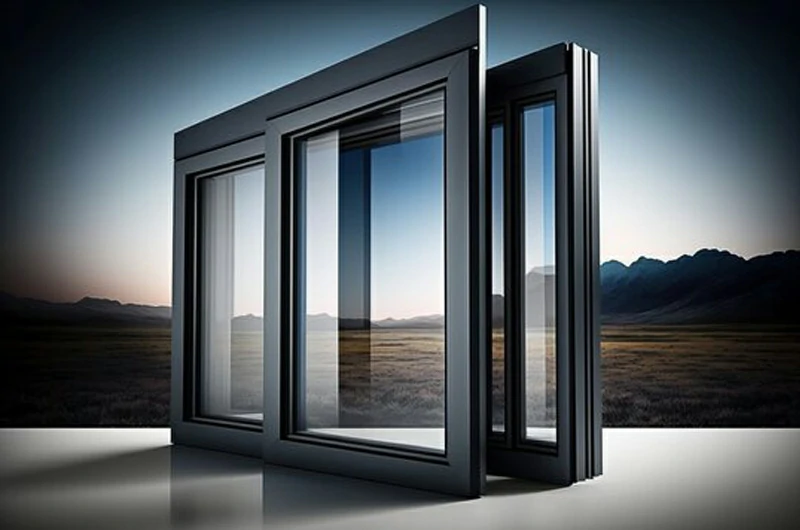
Common application types of aluminum alloy doors and windows
- Wall window
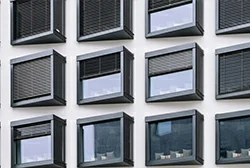
- Balcony frameless window
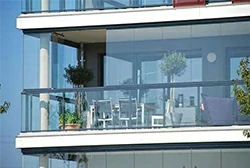
- Balcony framed window
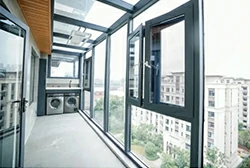
- Floor-to-ceiling windows
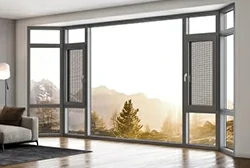
- Dormer window
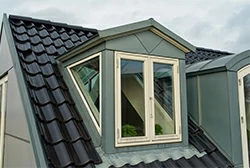
- Bathroom window
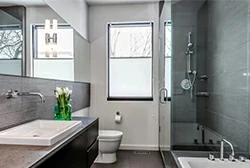
Choose the right aluminum window system
Aluminum alloy doors and windows are widely used in modern buildings, from wall windows to roof windows, from frameless balcony windows to bathroom windows. Their versatility and beauty make them the first choice for design.
Different types of windows, such as casement windows and sliding windows, work together to add beauty and practicality to the building. Next, we’ll take a closer look at these different types of windows to better understand their role and value in architectural design.
Aluminum sliding window
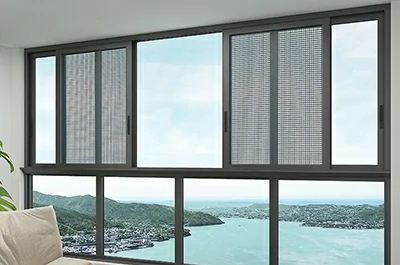
- This type of window opens and closes by sliding horizontally, usually with sliding tracks, making it easy to operate and suitable for various building types such as residential, commercial and office buildings.
Horizontal sliding windows have 2, 3 or 4 panes, depending on the width of the window. Available in a range of standard sizes with widths up to 3 m and heights up to 1.5 m, larger custom sizes are also available. MASTAR aluminum sash windows are available in a variety of configurations, including dual-track or multi-track options for wider openings, so you can choose the product that best suits your building.
Advantages: simple and beautiful, large window width, large glass block, wide field of view, high lighting rate, easy to clean the glass, flexible use, safe and reliable, long service life, open in one plane, taking up less space, easy to install screens, etc.
Disadvantages: The two windows cannot be opened at the same time, they can only be opened half way at most, and the ventilation and sealing are also slightly poor.
Aluminum casement window
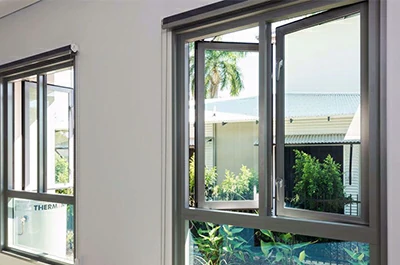
- Casement windows move in a parallel fashion to open and close, often with hinges that allow them to rotate on a vertical axis. This kind of window is suitable for various scenes and provides good ventilation and lighting effects.
Casement windows are available in widths up to 2.4 m and heights up to 1.8 m. Their maximum sash dimensions can be 600mm wide and 1200mm high.
Advantages: large opening area, good ventilation, good sealing, excellent sound insulation, heat preservation and impermeability. The inward-opening type is convenient for cleaning windows; the outward-opening type does not take up space when opened.
Disadvantages: small window width, limited field of view. Opening an outward-opening window takes up a space outside the wall and is easily damaged in strong winds; an inward-opening window takes up part of the indoor space, making it inconvenient to use screens and curtains when opening the windows. , if the quality is not up to standard, rain may leak out.
Aluminum rotating window
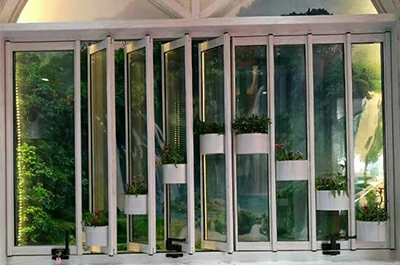
- Rotating windows can be rotated and opened on the horizontal or vertical axis to provide flexible ventilation methods. Made from lightweight, corrosion-resistant aluminum alloy.
- Aluminum alloy rotating windows are divided into inner-hung windows, outer-hung windows, center-hung windows, vertical rotating windows, and blinds.
Top-hung window: The upper side of the window is fixed and can be pushed open from below. It has good ventilation, excellent safety performance, easy cleaning, and strong practicality. It can avoid occupying indoor space. Even if you forget to close the window, it is difficult for rainwater to enter the room.
Bottom-hung window: A bottom-hung window refers to a window whose hinges are installed on the corresponding parts of the lower window frame and the lower window stile respectively, and open inward or outward along the horizontal axis. Bottom-hung windows provide better ventilation, but are not rainproof and are only used for indoor bright windows or ventilation windows.
Center-hung window: The window shaft is installed in the middle of the left and right side sills of the window sash and rotates along the horizontal axis. Commonly used as high windows in stairs, walkways and bright windows on doors, as well as side windows or transoms in industrial buildings.
Vertical rotating window: Also known as vertical rotating window, it is a window with a fixed center and rotating opening. It is divided into two types: horizontal vertical rotating window and vertical vertical rotating window.
Shutters: Low cost, high strength. The column torque is perforated by fully automatic CNC equipment and assembled quickly. The construction period is short. The materials can be cut directly at the construction site and assembled and installed on site.
Aluminum lift-up window
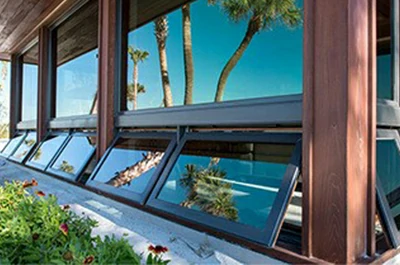
- Lift-up windows use an up-and-down opening method, which is suitable for small openings that need to be opened but cannot be opened inside or outside. They are widely used in high-rise buildings and have superior energy-saving, thermal insulation and wind pressure resistance properties.
Aluminum bi-fold windows
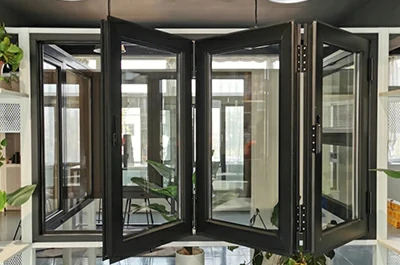
- There are multiple panels that fold and stack to create barrier-free openings, bringing a modern elegance to the space, perfectly blending functionality and beauty. Its strength lies in its versatility, providing ample natural light, fresh air and a seamless connection between indoors and outdoors by customizing the number of panels and folding directions.
Aluminum stack windows
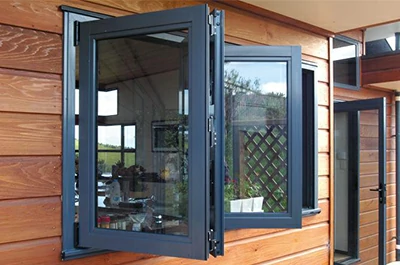
- Also known as folding sash windows or accordion windows, they occupy an entire wall from top to bottom and provide unobstructed panoramic views of the surrounding environment. Consists of multiple panels (usually 3-10) that fold into each other when opened. They are a modern invention that is ideal for people who have large homes with plenty of room to move around.
6 tips for aluminum window purchase
When you choose aluminum doors and windows, we have prepared seven thoughtful suggestions for you, hoping to help you make a more informed decision.
(1) Look at the thickness. Commonly used 70 and 90 series aluminum window profiles have a wall thickness of 1.4~2.0mm.
(2) Look at the intensity. When purchasing, you can bend the profile appropriately with your hands, and it should return to its original shape after letting go.
(3) Look at the color. The color of the same aluminum alloy profile should be consistent. If the color difference is obvious, it is not suitable to purchase.
(4) Check the flatness. Check the surface of the aluminum alloy profile. There should be no dents or bulges.
(5) Look at the glossiness. For aluminum alloy doors and windows, avoid purchasing profiles with open bubbles (white spots) and ash (black spots) on the surface, as well as hydrogen burrs, peeling and other obvious defects.
(6) Look at the degree of oxidation. When purchasing, you can lightly scratch the surface of the profile to see if the oxide film on the surface can be wiped off.

